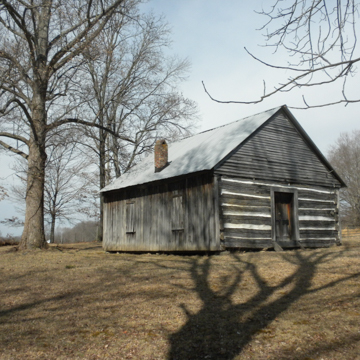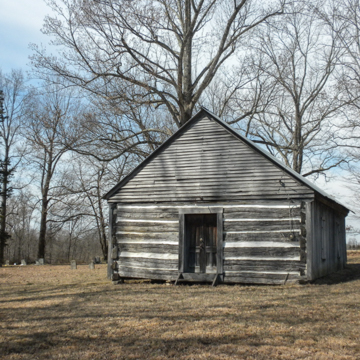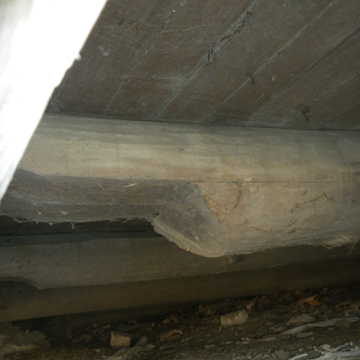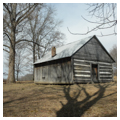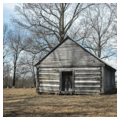You are here
Mount Vernon African Methodist Episcopal Church
Situated only five miles north of the Tennessee state line, Mount Vernon African Methodist Episcopal Church, originally known as Freetown Church, was built in 1848 by recently freed slaves George Pipkin, Albert Howard, and Peter West. White farmer William Howard traditionally freed his slaves when they turned twenty-one, and some of them chose to stay close to family, forming the community of Freetown, Kentucky, on 400 acres that Howard gave them. Seventeen free Black people are known to have lived in Freetown in 1860, among 922 slaves living in Monroe County at the same time. Albert Martin donated the land for the log church; Peter West served as its first preacher.
Built on a slight rise, the 24 x 27–foot church building is a one-story, one-room log structure. The rough-hewn notched logs are set with pegs at the corners, with chinking filling the gaps between the logs. The wooden puncheon floor is set off the ground by sleeper logs. At an unknown date, the long sides and gables were covered by battens and a tin metal roof was laid over the original shake shingle roof. The church is entered through a double door on the south gable end, opposite a small square shuttered opening in the center of the north gable end. Churchgoers were warmed in cooler months by an interior brick fireplace on the center of the west side. The nearby graveyard contains several rock markers as well as marked stones.
The church was used as the Gamaliel Colored Elementary School until Kentucky schools were integrated in 1963. It still contains wooden pews used by students. While not used for regular services and not regularly open to visitors, it is the site of an annual church picnic.
References
Curtis, Nancy C. Black Heritage Sties: The South. New York: New Press, 1998.
Savage, Beth L., and Carol D. Shull. African American Historic Places. Washington, D.C.: Preservation Press, 1994.
Oppel, Mary Cronan, “Mount Vernon African Methodist Episcopal Church,” Monroe County, Kentucky. National Register of Historic Places Inventory-Nomination Form, 1977. National Park Service, U.S. Department of the Interior, Washington, DC.
Writing Credits
If SAH Archipedia has been useful to you, please consider supporting it.
SAH Archipedia tells the story of the United States through its buildings, landscapes, and cities. This freely available resource empowers the public with authoritative knowledge that deepens their understanding and appreciation of the built environment. But the Society of Architectural Historians, which created SAH Archipedia with University of Virginia Press, needs your support to maintain the high-caliber research, writing, photography, cartography, editing, design, and programming that make SAH Archipedia a trusted online resource available to all who value the history of place, heritage tourism, and learning.










